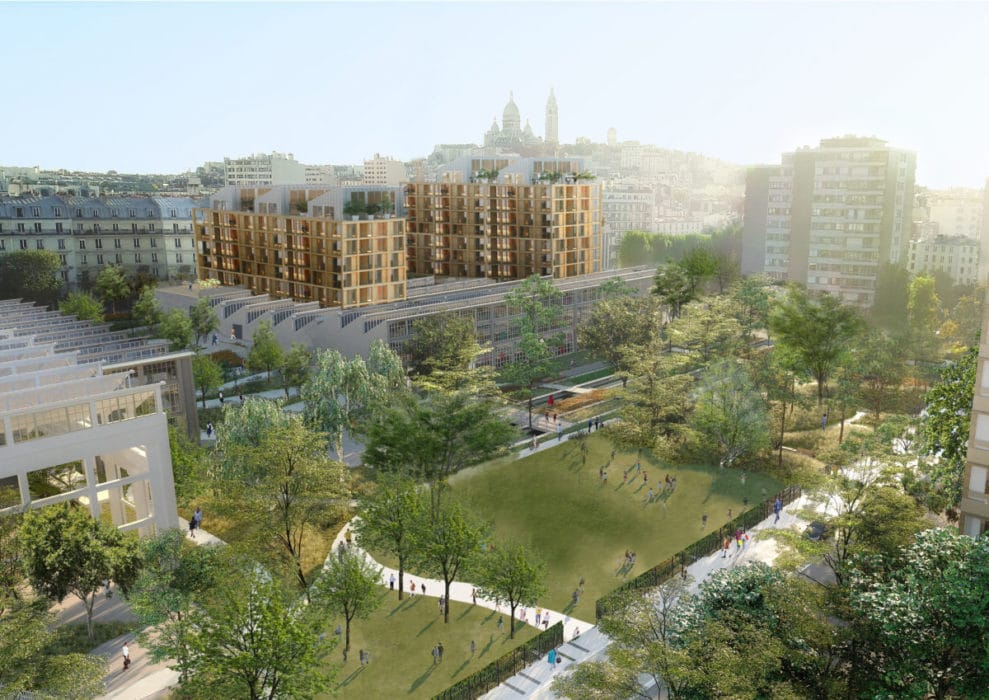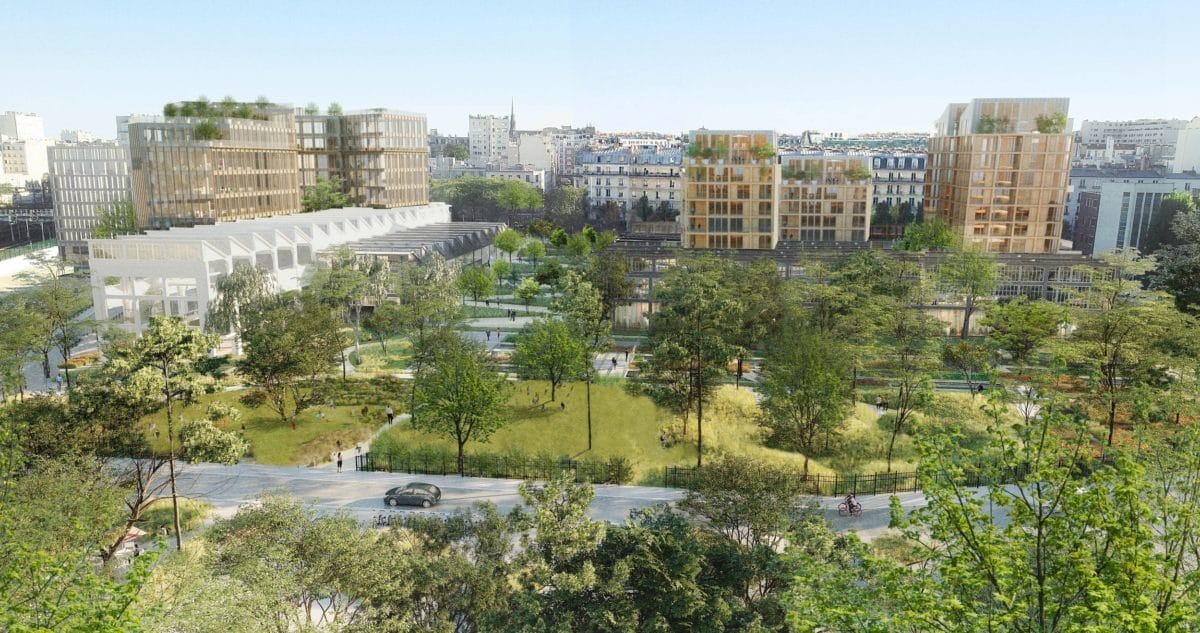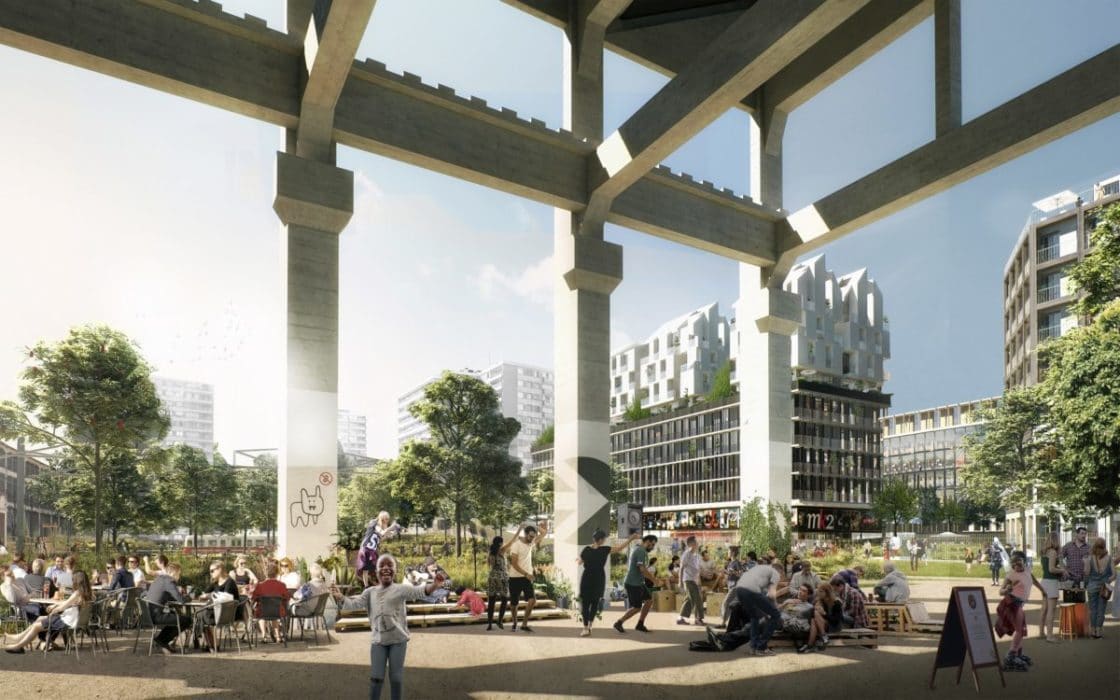Ordener-PoissonniersRead more
We first imagined the lifes of the users – inhabitants, neighbors – in the Jardin Mécano. The main uses were implanted on the site like acupuncture points would be on a territory, concentrating the energies and channeling the flows, with respect of the diversity of the activities, their nestings and the density of their settlements. We designed the public space by asking what service it would provide to its users, and how it could provide the guarantees of security and social bubbling of life in Paris. The public space is the combination of a public garden and a new street that crosses the site diagonally. It is animated by vigilant presences never distant of more than 35 m – shops, concierges, services, kiosks, cafes, workshops – whose activities condition the public space.
The urban forms have emerged as elements linking the industrial heritage, the Haussmannian city, urban planning and railways. They are turned towards the sun and gathered in two sets with, in the South, Parisian buildings located at the Ordener street alignment and, in the North, buildings forming a comb with the Andrézieux bar, keeping the center of the site free of construction to accommodate a public garden. The architecture is sometimes generic, sometimes element of identification, often both. The buildings consist of parallelepipedal volumes surmounted by disjointed town houses, placed on a plinth of shops and services. They are covered by roofs with two slopes reminding us that “it is the roof that begins to found the house” (1).
During this design process that lasted nearly three years, we can see the continuous influence of Jane Jacobs’ thinking on our design. Activist, mother, slayer of the modern city, the “art of urbanism” and the automobile, she began her work in the 1950s with a detailed description of life in her pre-gentrification Greenwich Village street, where children used to play close to the artisans who were used to working while watching kids out of the corner of the eye, traders and their customers whose names remind them that they come from all over the world. It will have defended diversity, invented urban acupuncture, promotes diversity and disorder, and linked the success of a neighborhood to the number of children in the public space.
” Under an apparent disorder, there is a marvelous order around which security in the street is ordered, and freedom in the city, this order is complex and at its base there is the maze of pedestrian traffic that generates an infinite succession of witnesses and observers ” (2). This is the organization toward which our project is moving.
(1) Marie-Claire Bancquart, Rite of Emotion Poems, 1969-2001, The Time That Dies, Paris, 2003
(2) Jane Jacobs, Decline and Survival of Large American Cities, Parentheses, Marseille, 2012
–
TECHNICAL SHEET
–
Location
24 rue Ordener, Paris 18e
Client
SNEF, Emerige, Ogic
Project management team
BiecherArchitectes, Christian Biecher assisté de Marine Fruchaud, Naoise Greene et Benjamin Hucorne, architectes
Architectes membres de l’équipe de maîtrise d’oeuvre
AAVP, Bourbouze et Graindorge Architectes, Nem Architectes, SLA-Paysagiste, TN+
Engineers
Oasiis, Athlance, ACV, Otéis, Embix, Transitec, Attitudes Urbaines, Grau, Bérénice, Gondwana
Project
Ensemble de logements, restaurants, commerces, écoles, espace co-working
Area
3,3 ha




